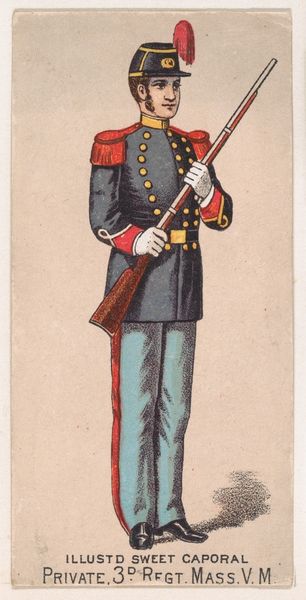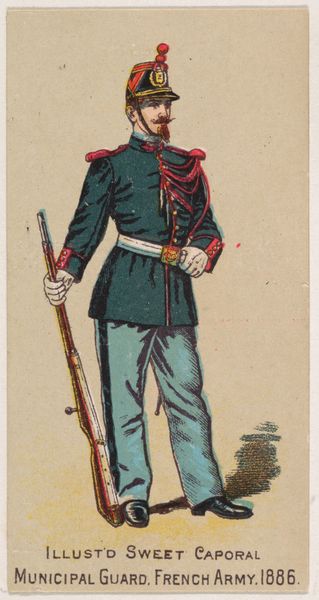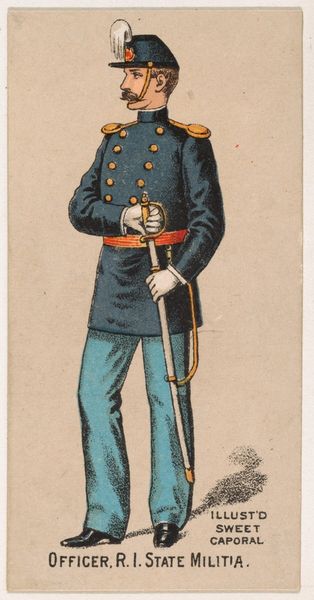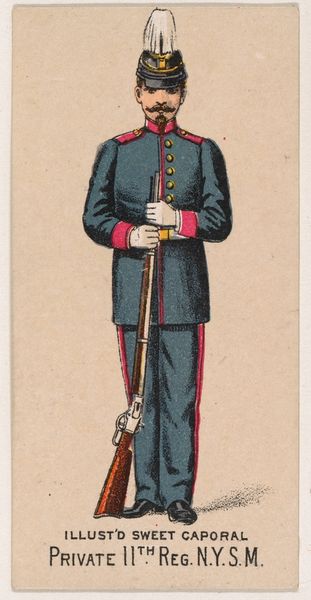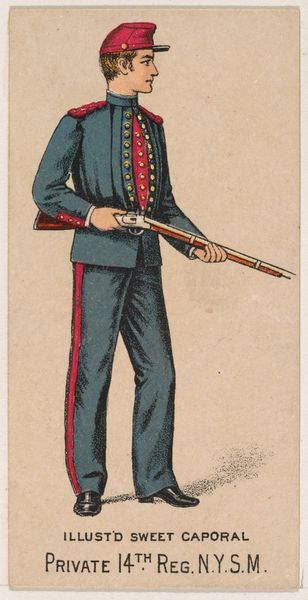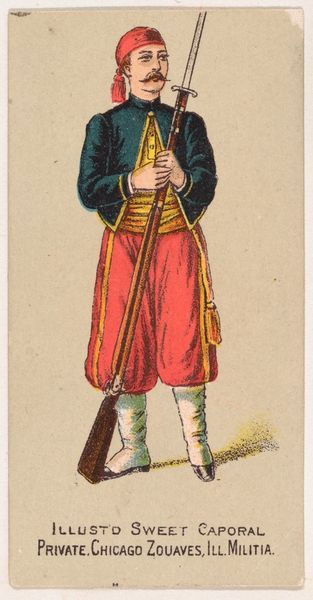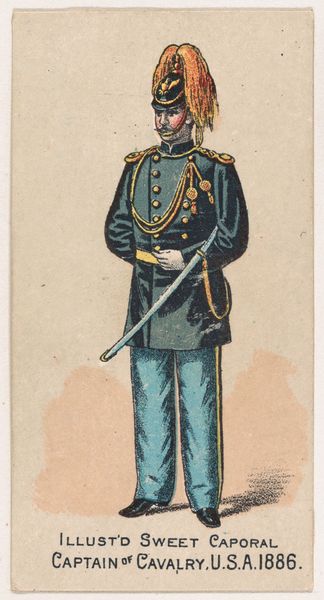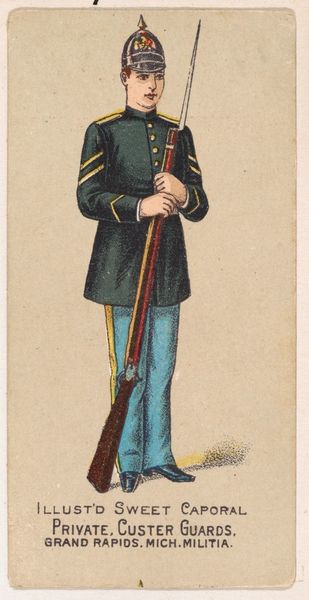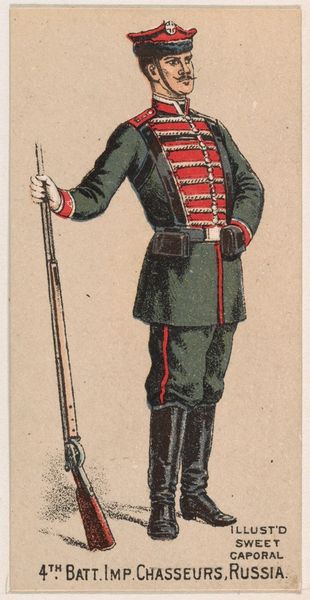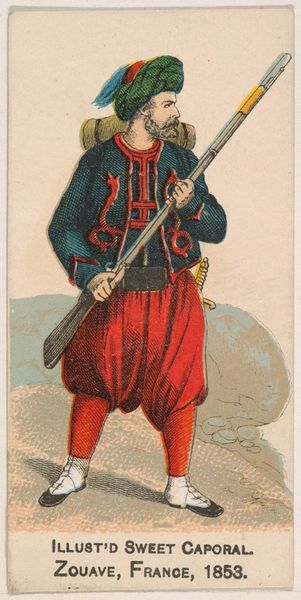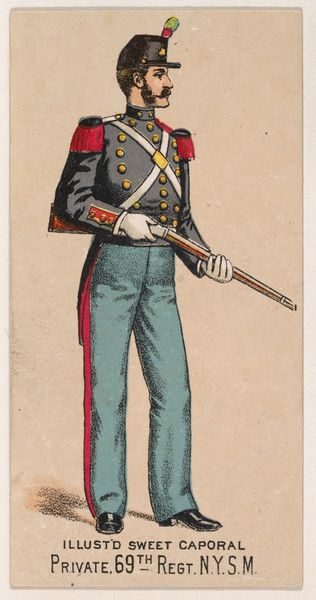
Infantry of the Line, Turkey, from the Military Series (N224) issued by Kinney Tobacco Company to promote Sweet Caporal Cigarettes 1888
0:00
0:00
drawing, lithograph, print
#
drawing
#
lithograph
# print
#
orientalism
#
men
#
genre-painting
Dimensions: Sheet: 2 3/4 × 1 1/2 in. (7 × 3.8 cm)
Copyright: Public Domain
Editor: This lithograph from 1888, "Infantry of the Line, Turkey," published by Kinney Brothers, is striking in its detail. The Turkish soldier is carefully posed, his uniform and weapons meticulously rendered. I’m curious, how do we unpack the historical and social implications of a piece like this? Curator: Precisely. We have to consider the context. It’s a tobacco card, so instantly we're in the world of consumerism and empire. Think about it: "orientalism" sold cigarettes. The image presents a romanticized and likely inaccurate portrayal of a Turkish soldier, feeding into Western fantasies about the "exotic" East. Who benefits from that fantasy, and whose reality gets erased? Editor: So, it's more than just a portrait. It's tied to larger power dynamics? Curator: Absolutely. It perpetuates a specific narrative. Who is crafting that narrative? Why Turkey, and not, say, France or Britain? It's crucial to recognize how images like these, distributed widely, contribute to shaping public perception and reinforcing colonial hierarchies. What is the relationship of Ottoman Turkey to Europe in 1888? What role did race play in this relationship? Editor: It's interesting to think of something seemingly so benign, a simple tobacco card, carrying such loaded meanings. It also does flatten cultural identity to the most superficial elements. Curator: Precisely! It’s a lesson in how the everyday, the seemingly trivial, can be a powerful vehicle for ideology. These images normalized a worldview where the East was inherently "other," reinforcing a sense of Western superiority. Editor: It definitely makes you question the images we consume today and what narratives they might be reinforcing without us even realizing it. Curator: Exactly. By critically examining historical artifacts like this, we become more attuned to the ways in which power operates in the visual world around us today.
Comments
No comments
Be the first to comment and join the conversation on the ultimate creative platform.
